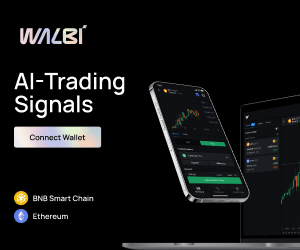Search the Community
Showing results for tags 'trading tech'.
-
Have you ever wondered how you can automate your trading strategies and increase your trading profits? Various types of technical analysis are to look at the indicators for signal and business based on the signals. I believe that “Behavior that puts great traders above the rest,” you should be noting all transactions in your trading journal, and you gain more experience, you should be able to identify configurations that you make the most money. What if you can program a computer to automatically identify these configurations and enter trades automatically? What if you can free yourself from the tyranny of the charts? You got me. Haters will say it can not be done, but they are wrong. It can be done. The amount of available financial data is amazing. You can get the price directly from exchanges via their most cryptocurrency interface application program (API), and, as expected, it’s just a bunch of numbers. Unsurprisingly, computers are much, much, much better than humans do the math. If you can identify configurations that make you the most money, so a computer can. We are talking about technical analysis, fundamental analysis not, which is a whole other kettle of fish. A guy I keep hitting about Ed Seykota, had a pretty good race in the 70 and 80. He pioneered trading systems and accumulated earnings 250 000% over a 16 year period in its model account. And yes, it is the correct number of zeros. This kind of earnings are unknown today. With the advent of computerization of transactions, it has had very little competition. The gains were eroded, but you can always do an excellent performance of automated trading systems. Technical analysis is the study of maps. View AT price search patterns and use indicators to determine market conditions. A flag is just a mathematical function on the price and / or volume of an asset. And a model is just a price arrangement over. This means a technical trading strategy boils down to numerical analysis and mathematical problems. Computers are much faster and more accurate than humans in solving math problems, so why not tell your computer what the rules are and let it trade for you? What is an algorithm? The dictionary definition of “algorithm” is: “A process or set of rules to be followed in calculations or other problem-solving operations, in particular by a computer. “ This sounds very similar to a technical trading strategy. You find a setup that works for you (eg MACD fast line crosses the slow line from bottom to top), and you decide what you will do about it (for example, place an order on the purchasing market, with a stop loss below 1% in the last level of support, and closing the trade when MACD lines intersect again). Here is a simple example, and it is all digital. If you can identify the situations in which you need to open a position, where you have to close a position, you can tell a computer to do the same. It will be faster and more accurate (assuming you are told to do the right thing!). The advantage becomes clearer if we look at a more advanced example. Suppose you want to combine 5 indicators and analyze a basket of 7 different assets for commercial entrance. That’s a lot of information that the human mind to handle. You will be going back and forth between screens to research your indicator to light in green and tell you to enter the market. The possibility of making a mistake is amplified when your attention is divided into several markets. This is when a computer is shining. The ability of a computer to manage the assets and multiple indicators is much higher than that of all of us. Computers still have their limitations, but even a basic laptop PC may exceed any human being when it comes quickly and analysis of accurate data. I hear some of you saying, “Yes, but I can set alarms and signals to tell me when the market conditions are right! “ You can. And how do you think the work of alarms and signals? They are algorithms. It is a step removed from algorithmic trading because the alarms just have to tell you when the market is in a certain state, they do not handle orders or anything like that. This part depends on you. What is really the easiest part of the operation? Why not get an algorithm to do all this? It is cheaper than hiring an assistant. In addition to general trade automatically, there are some specific uses for automated trading, including: High-Frequency Trading (HFT) Arbitrage scalping reducing transaction costs HFT group execute large volume transactions with high speed, hence the name, “high frequency”. In 2008, after the collapse of Lehman Brothers, there is great concern about the liquidity in the stock market. NYSE decided to do something about it in 2016. They introduced a new incentive for the market makers, attract groups to provide liquidity in the market by offering rebates averaging $ 0.0019 to trade at NYSE- and NYSE MKT-listed securities. It does not sound like a huge incentive, but if you make millions of trades every day, rebates start adding. How could the man possibly make millions of transactions a day? And millions of profitable trading it! They can not. Enter, automated trading systems. By introducing rebates, incentives NYSE HFTs use, entities that can make trading decisions in microseconds, and were rewarded for it. Some see it as unethical because HFTs have greater profit non-HFTs. They did, but that just means the rest of the market needs to adapt to the new players. Adapt or die. The market is constantly changing, this is just one of the changes. The world has become computerized, and there will always be people who stand in the way of progress, because what “progress” for others really hurt these people in the short term. So it is understandable that people would be annoyed by HFTs. But advances progress. Work that can be automated will be automated. We need to deal with the fact that. Do not worry, we’re going to dive into a discussion about automation and the future of humanity today. Let us return to automated trading. Another special use of the automated trading system is to arbitrate. Arbitration is the simultaneous buying and selling of the same assets in two different markets, the prices are out of sync. For example, now BTCUSD Kraken trading at 7281.50, and 7294.10 on Bitfinex. The difference is 12.60. If you can buy and sell BTC to the Kraken in Bitfinex, you can create a 12.60 per BTC, no questions asked. This is seen as a “risk-free” as you buy and sell the same assets since this price must be met eventually. I say “should” because this may not always be the case. This price difference may not last long, because there are other vendors out there watching the price, and hope to take advantage of the spread as well. So, you have to be quick. And what better way to trade faster than a computer program to do it! Arbitration bots that seem simple, but is becoming more complex. There are many different problems that you normally would not find in other types of trade, such as the speed of execution. This becomes a problem because of the difference in price will not last long before other arbitration capitalizes on the difference. So the fastest finger first. Some trade groups resort to “co-location”. This is where the trading company trading algorithms are hosted on servers in the same building as the exchange server so that they can be directly connected with fiber optic cables. When many trading companies doing this, data center providing fair conditions for all groups using exactly the same length of fiber optic cable to connect the server each trade group for the exchange server. It will come down to the level of detail, it’s how high competition in this space! Scalping is another application. This involves entering a trade and close them after a short time to make a profit from small price changes. If you watch the graph for any liquid assets, even 10 cryptocurrencies, you’ll see prices move constantly. Touts the advantages of this movement. In the same vein to HFTs, brokers make money on the scale. If you make $ 0.10 per trade, you need a lot of Helluva trade to make significant gains. But with algorithmic brokers, you can do it. scalping demands rapid decision-making, something that computers are better suited to than us humans. Work on the short term and create short-term trading is something that requires speed and precision of computers. Short time frame also helps to limit the risk exposure for brokers, as they are only exposed to market movements for a very short period of time. They do not have to worry about large swings in price because they are only in the market for a few minutes at a time. Smaller profit per trade is also much easier to get. It’s more likely that the market will move in the same direction 0.10 from 1.00 in the given time-frame. This makes it easier for brokers to make a profit on every trade. This move more often, so brokers can make money even when the market is relatively quiet. Some may look down on scalping as a lower form of trade, but at the end of the day, it is a way to make money in the market. Perhaps you are better suited for scalping from the technical or fundamental analysis? If so, that’s good. The aim of the game is to make money, not to be the smartest person in the market, or even the most skilled. The last type of automated trading that we will discuss here is the reduction of transaction costs. The algorithm used to split large orders in to smaller ones, and then insert them into the market from time to time to get the best price. large orders can move the market, so large institutional investors will use an automated system to cut their orders into bite-sized pieces that can be absorbed by the market without affecting the price too much, if at all. It is less exciting use of the algorithm in the trade, but it is necessary, and it’s another example of a much better job is done by a computer rather than a human. In the early days of Ed Seykota, he programmed trading algorithms into a punch card that is read by a computer! Luckily trading technology has come a long way since then. Now anyone with basic programming skills can set up a trading algorithm. If you have a trading system, whether based on the signal indicator, pure price action, or other technical analysis, you can write a short script to monitor the indicators that you choose and act on them. If you do not have programming skills, then contract out the work on platforms like oDesk. There are a few around the trading platform that allows you to write your own trading algorithms, and integrate it with their infrastructure. You do not have to worry about connecting to exchange API, how to calculate profit and loss, or even how to run the command. This system has solved all these problems so that you can work on a high-value aspect of your trading operations, the algorithm itself. Some of the platforms include: The catalyst (my preferred platform) HAASONLINE Gekko Trading View Quantopian (non-crypto) Quantopian does not support cryptocurrencies, but I think I’ll add it in because it was the most advanced of all these systems. Catalysts branched from the underlying technology Quantopian, but different because they focus exclusively on cryptocurrencies. This system I use now. Both are written in Python. I have not tried HAASONLINE, therefore, paid services, but I think I will add it to show what other kinds of solutions are available now. And Gekko is an alternative that is written in Javascript. I do not think it’s as polished as Catalyst, but it does give some good features. One thing Catalyst, Gekko, and Trading View have in common is backtesting. Both systems allow you to download the historical price data from exchanges, and test your algorithms over a period of time in the past. It’s good to develop algorithms and hone it. At Catalyst, depending on the pair you want to test against, you can trade from March 2015 until yesterday and every period between. You can backtest as many times as you like, without the risk of money, until you are satisfied with the results. Trading View has a very simple scripting language called Pine, which you can use even if you have no experience in programming. It’s very easy and can be your gateway into automated trading. Realize, too much can cause your backtesting to over-fit your strategy to historical data. It is the algorithm can work perfectly for the price action from Jun 2017 to December 2017, you get a 3000% (Woah!) But it just might work for a period of time. market conditions are constantly changing, so you can not rely on back-testing to give a perfect algorithm. A strategy I tried out now to hone my algorithm is to use a Monte Carlo simulator to generate a random price for the next year, then the hose in Catalyst, and run my algorithm to the data-set. In this way, I can test my algorithm on an unlimited number of possible future scenarios. So, what is your prespective on getting profitable with automated trading?
-
- auto trading
- robot trading
-
(and 1 more)
Tagged with:
-
Hi guys, algorithmic trading or automated trading has changed the trading systems. Now, with automated trading, a trader can earn more profits in less time. Today, I will discuss some benefits of algorithmic trading. Therefore, without wasting time, let's start. Algorithmic trading (also called automated trading, trading in a black box or algo trading) uses a computer program that follows a set of instructions (algorithms) to exchange. Trade, in theory, can generate profits at a speed and frequency impossible for human traders. The instruction set is defined according to any time, price, quantity or mathematical model. In addition to profit opportunities for traders, automated trading makes the market more liquid and trading more systematic, despite the impact of human emotions on trading activities. Benefits of trading algorithms Automated trading offers the following advantages: The trade is executed at the best price. The placement of trading orders is instant and precise (there is a possibility of high execution at the desired level). The trade is timed correctly and directly to avoid significant price changes. Reduce transaction costs Automatic controls simultaneously on various market conditions. Reduce the risk of manual errors when placing trades. Algo-trading can be retested using historical and real-time data available to see if it is a viable trading strategy. Reduce the possibility of mistakes made by human traders on the basis of emotional and psychological factors. Algo-trading is used in various forms of trading and investing activities, including: Investors or medium and long-term buying companies - pension funds, mutual funds, insurance companies - use Algo to buy large quantities of stocks when they do not want to influence the price of the shares by investing separately. Short-term traders and sellers - market makers (such as brokerages), speculators and arbitrage - benefit from the automatic execution of trades; In addition, algo trading helps to create sufficient liquidity for sellers in the market. Systematic traders - trend followers, hedge funds or two-way traders (neutral trading strategies that combine long positions with short positions in pairs of highly correlated instruments, such as two stocks, traded funds exchange (ETF) or currencies) effective to schedule their trading rules and let the trading program automatically. Algorithmic trading provides a more systematic approach to active trading than intuition-based or trader-based instincts.
- 1 reply
-
- algo trading
- trading tech
-
(and 1 more)
Tagged with:











